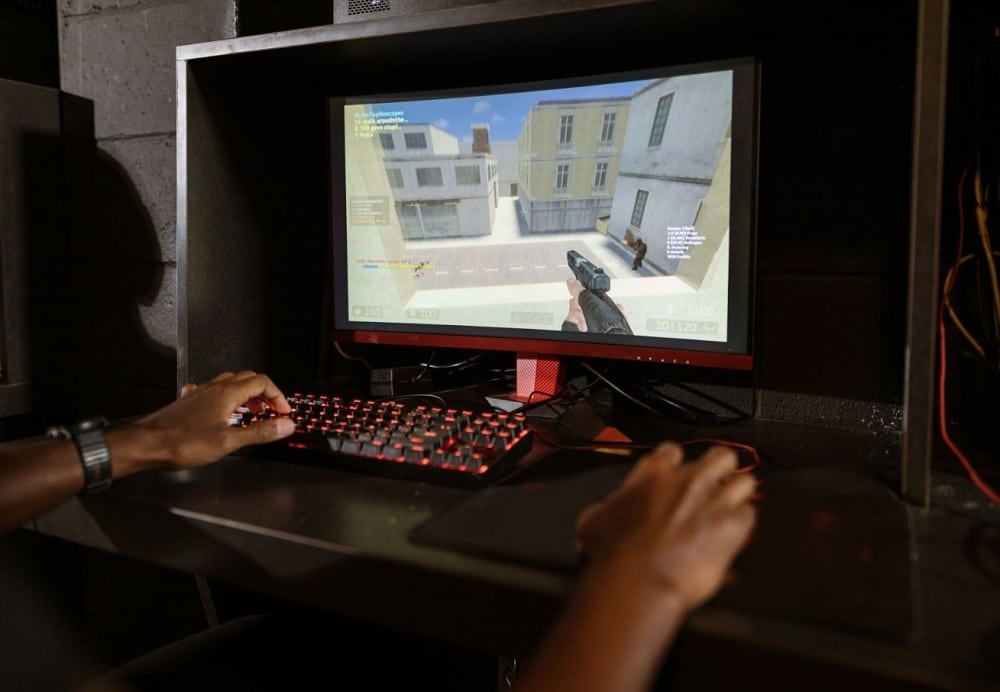Does G-Sync Lower Frames Per Second?

Gaming monitors have been one of the most developed peripheral devices in recent years, and as the performance capabilities of graphics cards and processors have exploded in the last decade, monitor manufacturers have been forced to rethink the technology their monitors use to reduce performance issues, improve clarity and solve long standing problems such as screen tearing and ghosting.
The result of these developments has seen monitors massively increase their frame rate capabilities, as well as reducing response times and increasing resolutions, however there has been one truly revolutionary development in monitor technology that has really caught on and made a huge impact on display performance in cooperation with the advance of the latest componentry.
Screen tearing is one of the most unsightly and frustrating issues gamers face. It’s an issue that occurs when your monitor is showing variable frame rates, and you’re moving around a lot in a game, which causes the frames to become muddled and appear as though they are torn in half, showing two scraps of different images simultaneously instead of one, perfectly synchronized image in harmony with the frame rate of the game and the monitors refresh rate.
This issue occurs when a game is rendering at unstable frame rates, which makes it impossible for the monitor to synchronize properly with the frame rate of the game, which is what causes the tearing effect that looks so unsightly and can spoil even the best looking game.
For a long time this issue went unsolved, however eventually Geforce developed G-Sync, a system included in some monitors to help eliminate or massively reduce the problem of screen tearing.
G-Sync achieves this by allowing your monitor to change its max frame rate automatically to help it stay synchronized with the frame rate being rendered by your graphics card, in real time.
This synchronization is what allows these monitors to avoid screen tearing, and when it initially launched G-Sync monitors commanded a huge premium as players desperately sought ways to solve this problem.
AMD also launched Freesync around the same time, which is their own version of this solution and achieves a similar result as G-Sync.
Now that we understand the function of G-Sync and the cause of the problem, let’s take a look at whether G-Sync affects performance and FPS!
Performance
In terms of raw performance, G-Sync has little effect on your computer or your games performance, and will not in any way directly affect frame rates as its a solution that’s built into the monitor itself, and is something that the monitor handles on its own without drawing any power from the CPU connected to it.
This means that you shouldn’t worry about G-Sync or Freesync having a drastic effect on your systems performance or how well your games will run on a new G-Sync monitor.
However, there is a small caveat to this.
Some users of G-Sync monitors report that when playing games at the maximum frame rate for a particular monitor, say a 144Hz G-Sync display for example, there have been some reports of hitching and stuttering using these monitors, when they play games at the full, maximum frame rate that they’re capable of.
These reports of sporadic stuttering are not uncommon when using these monitors at max performance, and their sporadic nature has made it difficult to pinpoint exactly what causes this issue.
However users have determined that lowering the FPS limit of your game or G-Sync display 4 or 5 frames below the maximum, so 139 or 140 FPS on a 144Hz monitor, helps to eliminate the occurrence of these stutters.
Many users believe that it’s worth dropping a few frames and getting a totally stable, tear-free, stutter free gaming experience rather than trying to squeeze the absolute max out of the monitor at all times.
This is the only impact G-Sync is known to have on frame rate capabilities, and it’s something that some users may not need to do if they don’t encounter the hitching that some users report when playing games at max resolution on these displays.
The ability to play games at a very high refresh rate in near total stability without any screen tearing at all is one of the best ways to enjoy games, and is a massive improvement on older displays.
However this small issue does highlight that G-Sync and similar technologies are still relatively new and have much room for improvement, and as the technology used in monitors continues to improve, and as the various big brands continue to fiercely compete for custom, it’s likely that these issues will be reduced or totally eliminated, allowing gamers to benefit from even better monitor performance than they do currently.
